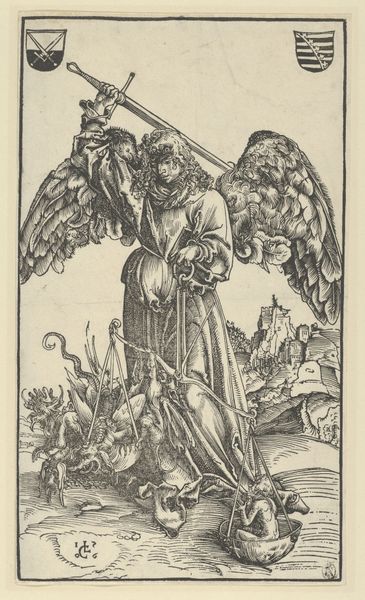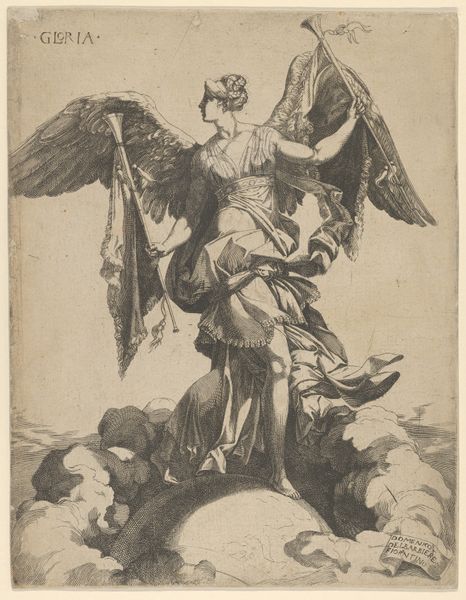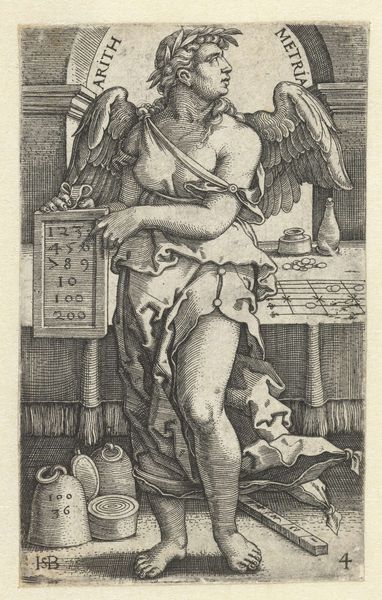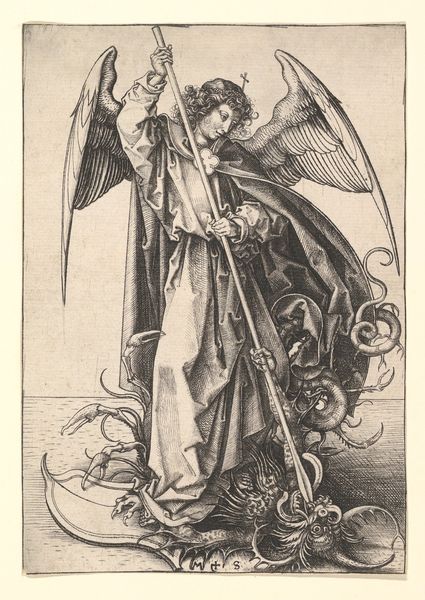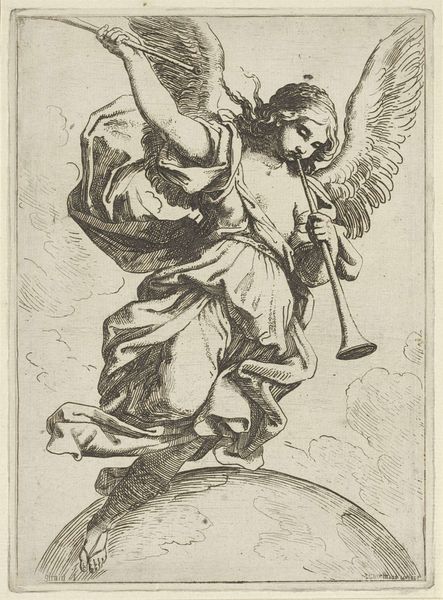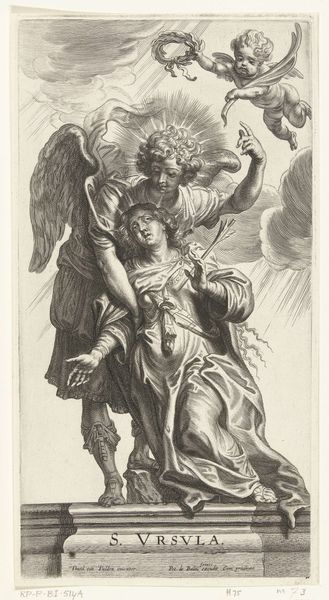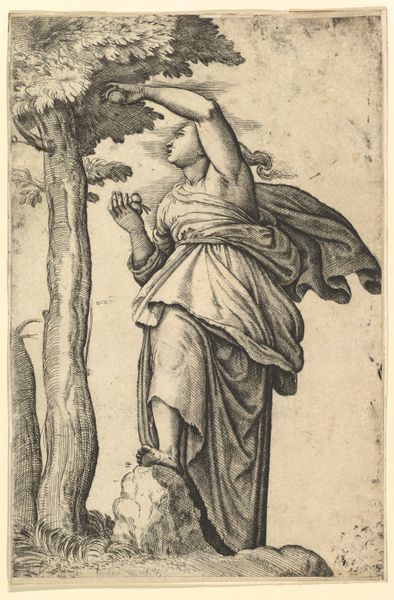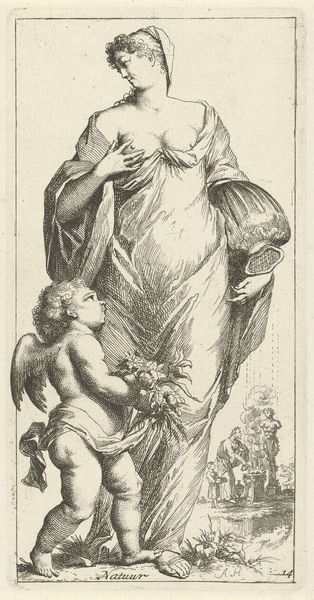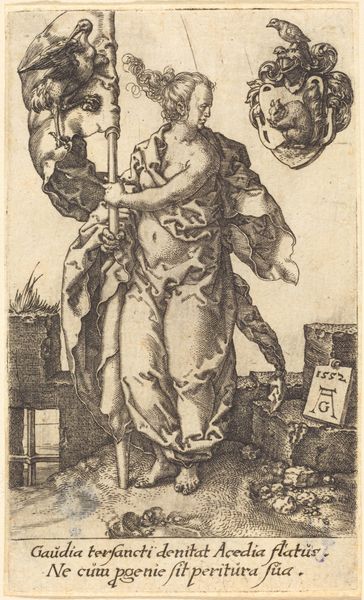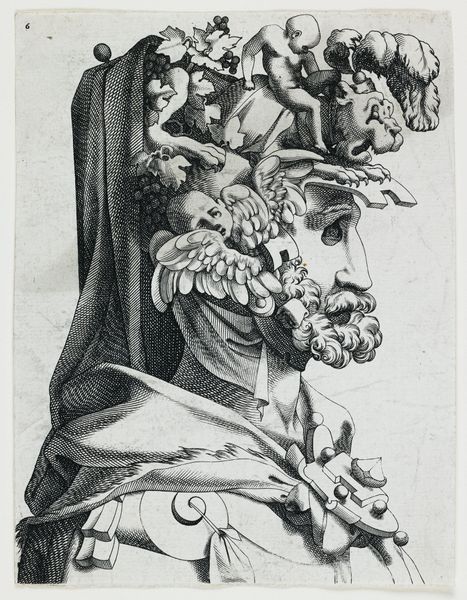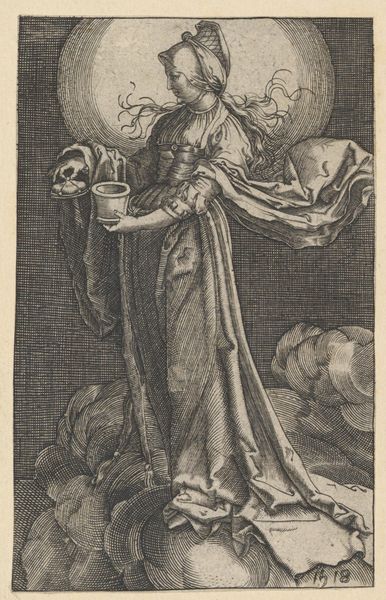
print, engraving
#
medieval
# print
#
figuration
#
northern-renaissance
#
engraving
Dimensions: sheet (trimmed to plate mark): 16.7 x 11.7 cm (6 9/16 x 4 5/8 in.)
Copyright: National Gallery of Art: CC0 1.0
Editor: This is "The Archangel Gabriel," an engraving by Martin Schongauer, made around 1490 or 1491. What strikes me is the intricate detailing in the angel's robe; it creates a sense of depth that contrasts with the flat background. How would you interpret Schongauer’s choices in this piece? Curator: The formal relationships in Schongauer's print demand attention. Consider the dynamic interplay between line and shadow, created through varied hatching techniques. The angel's figure isn’t just represented, it’s constructed through these marks. Notice how the density and direction of the lines define volume, texture, and even emotion. Do you observe a deliberate contrast between the soft, rounded forms of the angel and the sharp, angular folds of the drapery? Editor: I do see that! The curls of hair seem so delicate compared to the heavy folds of the robe. The sharp lines do create contrast. Is that a technique used to convey a sense of spirituality or divine presence? Curator: One could argue so, by contrasting earthly weight and divine lightness. Formally, we see an intelligent use of line to create visual interest, movement, and a sense of three-dimensionality in a two-dimensional medium. Schongauer directs our gaze through the precise modulation of light and shadow, ultimately towards the serene face of the angel. Consider how that focus enhances the overall impact. Editor: This makes me see the piece in a new light, no pun intended. I focused on details at first, but now the overall structure and composition become much more striking. Curator: Indeed. The beauty of this print resides not merely in its subject matter, but in the rigorous manipulation of visual elements. That interplay invites us to analyze the aesthetic and technical mastery achieved by Schongauer.
Comments
No comments
Be the first to comment and join the conversation on the ultimate creative platform.
